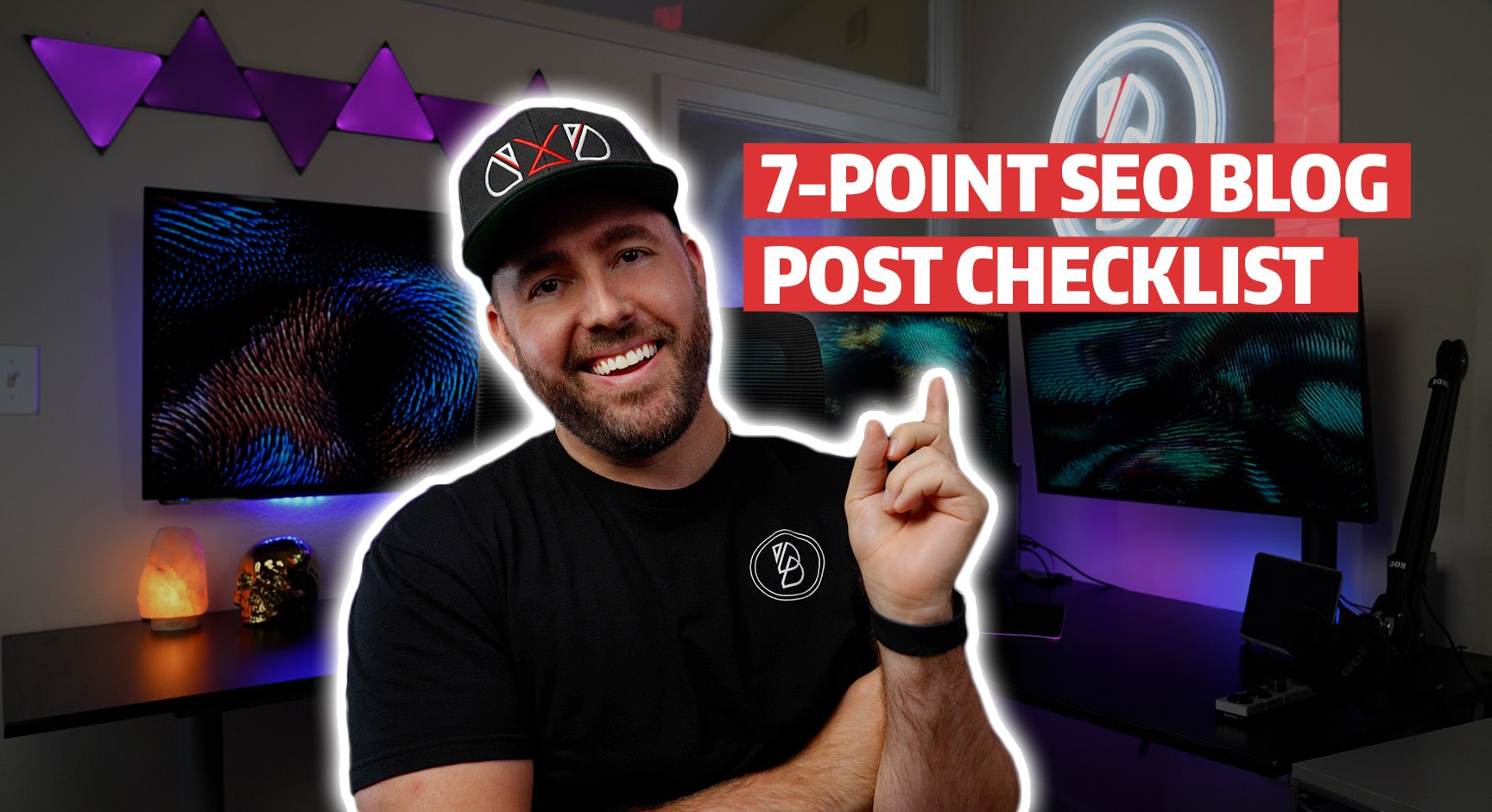Creating and running successful blogs requires more than just great content – it takes a few tried and tested SEO tips and tricks to help you get found online. So, if you’re writing a blog and wondering how to rank higher on Google, read on for our ultimate blog SEO checklist!
1) Conduct Keyword Research
Keyword research is the practice of finding certain words and phrases that internet users type into search engines when looking for information, products, or services. When you know what words and phrases users search for, you can strategically integrate them into your blog post so more people find you.
Always do your keyword research before writing a blog post to plan the structure of your article accordingly. Do that by noting down a few popular words and phrases related to your post, and then find out how often people search for these terms.
To find the average number of monthly searches for certain words and phrases, use a keyword research tool like SEMRush, KWFinder, Serps, SEO Book, Wordstream, or Keyword.io. Many of these offer free trials or free versions with limited daily searches, but if you’re serious about writing a successful blog, you may want to opt for a paid and unlimited version.
2) Pick a Strategic Blog Post Title
An important part of our blog SEO checklist is the title. Your blog post title is the first thing people see on search engines, on social media, and the main heading for your post. Your title should always have your focus keyword included because search engines use it to rank your post.
While you may think a funny or clever headline will attract an audience, it’s not the best practice when it comes to search engine optimization. Instead, apply these SEO tricks:
- Include your focus keyword in your title
- Use proper sentence form, e.g., “The Ultimate 7-Point SEO Blog Post Checklist to Boost Rankings”
- Keep the title short at about 60 characters or less
3) Optimize Your Blog Post URLs
URLs, also known as “page slugs” refer to the unique pages on your website and are a crucial part of SEO. Search engines notice which URLs you choose for your blog posts and use them to rank you.
One of the most important things to remember is to keep your URL short. A long URL isn’t appealing, so fewer people will share your posts on social media.
You can easily change URLs in your content management system. Make sure to follow these SEO tricks for your URLs:
- Keep them as short as possible, e.g., /blog-seo-checklist
- Always include your focus keyword
- Separate words with hyphens and not underscores
- Don’t use any uncommon characters like %&$*
- Avoid using words like and, to, in, an, a,
- Don’t use additional elements like .php or .html
4) Use Appropriate Headings and Subheadings
Search engines can better understand your content when you break them up with headings and subheadings. They also make it easier for your readers to consume your article. In addition, your blog post headings determine what keywords you rank for.
Some people think they can use H1-H6 headings randomly. They style their articles with headings instead of using them to rank better on search engines, but using the correct headings and subheadings is a crucial part of our blog SEO checklist. To do this correctly, use your headings in the following specific order.
Headings:
- Heading 1 (H1) is the main heading and should be used for your blog post title
- Heading 2 (H2) is used for your subheadings, e.g., different paragraph titles
- Heading 3 (H3) should be used for subheadings within your H2 subheadings
- Heading 4 (H4) should be used for a subheading within your H3
- Heading 5 (H5) should be used for a subheading within your H4
- Heading 6 (H6) should be used for a subheading within your H5
Headings Tips & Tricks:
- Only use one H1 tag per blog post (one title)
- Outline the main sub-sections of your blog post
- Try to include your keywords in your subheadings if possible
- Always aim for sentence form rather than one word
5) Write High-Quality Content
One of the best ways to rank on the first page of Google is to provide high-quality content. While low-quality content could have ranked high before, search engines can now spot subpar content from miles away. Things like your post topic, the time readers spend on your site, and the bounce rate all matter when it comes to your ranking.
There are no Google employees that read through blog posts to determine how good they are, so you’ll have to ensure these key aspects are on point:
- The number of words per post – aim for at least 1000-2000 words per article
- Include your focus keyword in the first paragraph
- Use your other keywords naturally throughout your post
- Include images and videos
- Use a good number of backlinks to strengthen your article, and make sure they link to trusted websites
- Share your articles on social media
6) Optimize Your Images for Search Engines
Another crucial aspect of our blog SEO checklist is your use of images. Images can make a bland article appear more alive and readable, but they can do more for your blog post than just giving it some color: They can help your article rank higher in search results.
While search engines cannot see your images, they can read the information attached to them. That’s why you should optimize your images in the following way:
- Name the image to fit your blog post
- Use an appropriate image size – If an image is too big, it can lead to slower website loading which creates a bad user experience. If it’s too small, it will show up pixelated. Use an online tool to reduce the size of your images if necessary. Make sure to keep them as small as possible without sacrificing quality.
- Add alt tags – Google ranks your images in their image search tool based on alt tags. Add some alternative text to explain what the image shows. This also helps your blog post to rank higher. You don’t need code to do this as most content management systems make it easy to add alt tags.
How to Optimize Images
Here are a few tips and tricks to help you optimize your images:
- Use short file names of 2–3 words
- Use hyphens and not underscores to separate words
- Include your keywords in the file name
- Resize your images before uploading them using a free online image editing tool
- Upload multiple images on your website with the batch feature
- When possible, use sentence form in your alt tags
- Include your keywords in your alt tags
- Use the alt tags to describe your image
7) Use Internal Links
One of your goals to ensure the success of your blog should be to keep readers on your site as long as possible. You can do that by suggesting further content for them to read on your blog. An internal link is a hyperlink that you integrate into your posts to link to other relevant posts.
When a reader on your site views several of your pages, Google takes note. The more pages the reader views, the more valuable Google considers your site. As a result, Google will send you more relevant traffic.
Links are also useful to prove to search engines that your content is trustworthy. Every time a link points to an article, it counts as a vote of trust. Try to link each post on your blog at least one time.
In addition, you can use keywords within your hyperlinks when linking to another page to help Google rank your blog posts. This is known as an anchor text. Instead of linking “click here for more,” highlight and hyperlink keywords that lead to other posts.
In summary, whenever using internal links, make sure to follow these key tips:
- Include several internal links to other relevant blog posts on your site
- Use keywords within your anchor text
- Don’t use too many links as this can negatively affect your user experience and appear messy
Final Thoughts
Ranking highly on Google and other search engines is the best way for users to find your blog. Keyword research and a strategic blog post title are important SEO strategies that can help your posts perform well.
Other essentials include optimizing your blog post URLs, using the correct headings and subheadings, writing high-quality content, optimizing your images for search engines, and using internal links.
All in all, if you follow all these SEO tips and tricks in our blog SEO checklist, and consistently provide readers with high-quality articles, you’ll be well on your way to building a successful blog.

